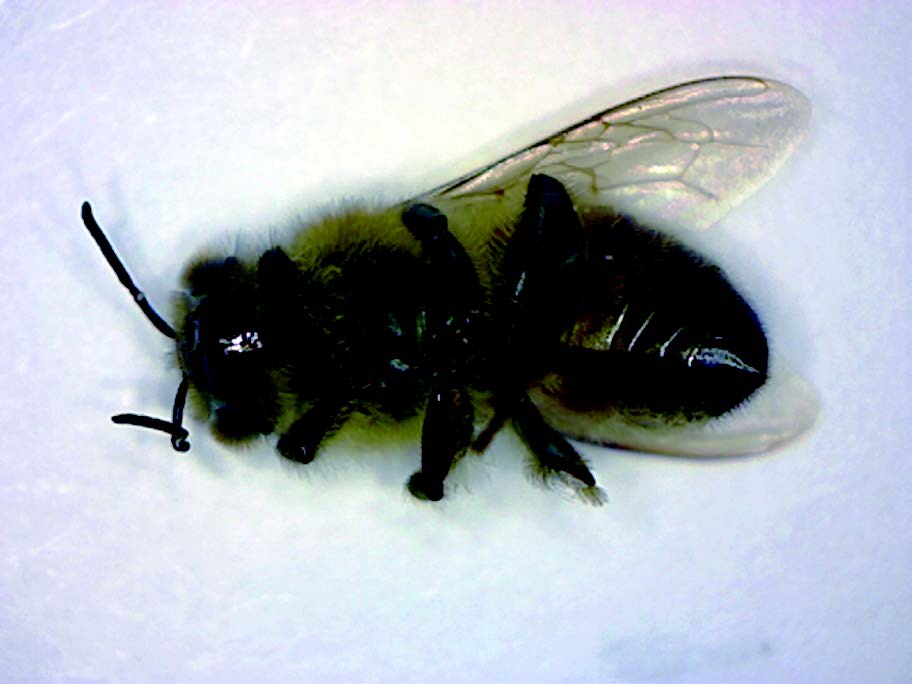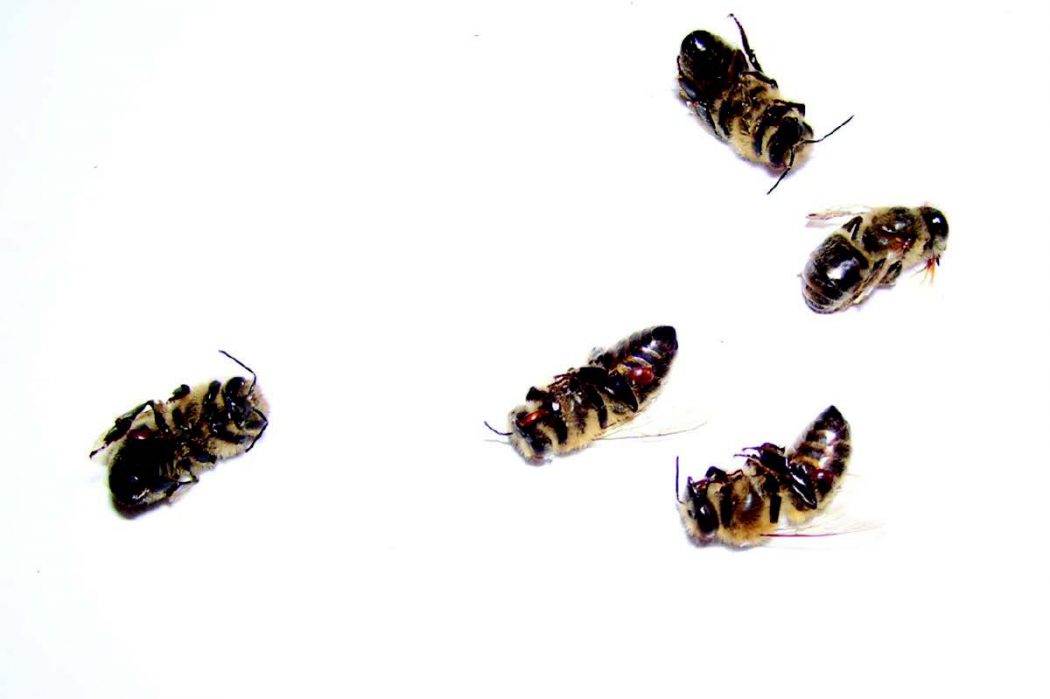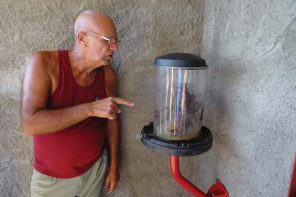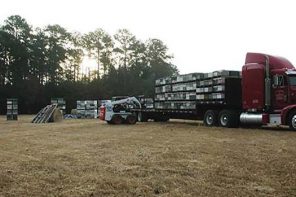By: Terry Combs
Is It Really Possible?
Bee Culture readers and subscribers;
For many years I have appreciated the sage advice, information and occasional opinions your new Editor has given as the American Bee Journal Classroom editor and writer. My first Classroom exchange with Jerry concerned the honey harvesting rules that were in place in my home state. His answer helped initiate a change in a state regulation. We also had a cooperative exchange over the loss of the best beekeeping instructional program we once had: the Boy Scout Beekeeping merit badge (My first intro to beekeeping). Unfortunately, neither we, nor the numerous others who tried to get it reinstated, were successful. However, there is at least one beekeeping issue where we have differed in solutions: solving the Varroa problem. That problem, and its solution, has divided the beekeeping community to the point that we now have beekeepers engaging in totally opposite paths and every possibility in between.
One of the last ABJ Classroom questions posed to Jerry concerned the feasibility of breeding honey bees for resistance to Varroa. After sending Jerry my response, he invited me to share it here in the pages of Bee Culture as an article. I’ve had several communications with Jerry on the subject of Varroa resistance/tolerance, chemical avoidance, honey bee survivability and considering bees as “pets”. In my response I put an explanation of why I’m so eager to respond on these issues. The why? Is best answered with the words of O. W. Park in December 1935 at the 48th annual meeting of the American Association of Economic Entomologists held in St. Louis, MO. [1] Oscar read his paper titled “Testing for Resistance to American Foulbrood in Honeybees.” Three sentences from Park’s paper best convey my thoughts and feelings and although Park was talking about AFB these sentences pertain just as much to Varroa:
“But claims regarding resistance have recurred so persistently that they can no longer be ignored. Either there is truth in these claims or there is not. The matter is too vitally important to the beekeeping industry to permit a continuation of the present status of uncertainty.”
As to what prompted me to reply to Jerry, it was a quote attributed to Canadian bee breeder Tibor Szabo: “trying to breed honey bees resistant to Varroa is like trying to breed sheep resistant to wolves”. I remembered reading words very similar that originated from Friedrich Ruttner; Professor of Zoology at Frankfurt University and head of the Institute for Bee Science in Oberursel. An understudy of Ruttner’s, John Kefuss, had told Ruttner that he had decided chemical treatments for Varroa were futile and damaging to the bees. Kefuss was more interested in natural bee resistance to Varroa. “Using chemicals is caveman beekeeping” Kefuss stated. To which Ruttner replied that bees couldn’t be bred for resistance to Varroa any more than sheep could be bred for resistance to wolves. But the story does not end there. Kefuss, along with German entomologist Wolfgang Ritter, found Varroa resistant bees in the apiaries of Tunisian beekeepers that were too poor to use chemical treatments thus allowing natural selection to bring about a balanced host-parasite relationship conferring resistance/tolerance to Varroa in their bees. After studying and working with the Tunisian bees Kefuss stated, in 1996, that “we knew we could select for Varroa resistance.” Ruttner’s last comment on the subject was “it turns out that sheep can be bred against wolves.” As to whether this is resistance, tolerance or some other mechanism, Kefuss also addressed that; “It’s not important to know just why a particular strain is surviving.” {2, 3] Why not? Because as numerous researchers have already shown; bees that develop natural resistance/tolerance to Varroa utilize different resistance mechanisms, or combinations of mechanisms, in different locations, sometimes even having different mechanisms between apiaries within the same general locale. [4, 5] To date there is no one universal resistance mechanism used by bees which resist/tolerate/survive with Varroa. Thus the reason that bees bred for only one enhanced trait/behavior/mechanism have not completely solved the Varroa problem. The utilization of different mechanisms in different locations is part of the reason why queens/bees reared in foreign locales do not solve the Varroa problem in a different environment even if showing resistance in their original locale. [6] However, there is recent research showing that a social immunity mechanism which appears to suppress mite reproduction; the uncapping and recapping of worker brood, has recently evolved in four separate mite surviving honey bee populations.[7]It remains to be shown that this mechanism is at work in other mite-surviving populations.
Numerous researchers have now studied and documented world-wide populations of honey bees that are surviving both Varroa and their associated viruses. [4, 5, 8, 9] (The Arnot Forest bees are a unique totally feral population.) So have many beekeepers, with myself among their numbers. For those who think this requires immense effort and centuries or millennia of time to come about; you are mistaken/misled. Current views from the field of evolutionary biology are that natural adaptive changes can come about rapidly between hosts and parasites especially in circumstances where hosts are suddenly confronted with a new novel parasite as has happened with Varroa destuctor and Apis mellifera: “A second source of evolutionary creativity is the speed at which natural selection can act. Selection does not need geological time, spanning thousands or millions of years, to transform species.” [10, P. 84] “The picture emerging of natural selection at the level of the individual, whether or not it is enhanced by species selection, is one of exuberance, power, and a potential for quickness. If enough raw hereditary material exists in the first place, and if the selection pressure (differences in survival and reproduction) are strong, one gene or chromosome can be substituted for another in fewer than a hundred generations” (20 generations = 1year for fruit flies) [10. P. 85] “The possibility is there for rapid microevolution and even the early stages of macroevolution. The capacity is well understood in theory and has been realized in laboratory experience. It is also displayed in wild populations when species are subjected to new selection pressures, such as the threat from a new parasite or access to a new food source.” (I added the emphasis) Wilson finishes by stating that the other big influence in adaption and evolution is the local ecology. [10, P. 92-93]
This ability to rapidly co-evolve with Varroa I have seen since dispensing with chemicals and allowing my bees to create their own maternal line. Yearly colony losses have gone from 83% in 1996 to less than 5% in the past few years, with 3 of the last 5 years having no losses.[11] Bees showing DWV damage have also become a thing of the past in my apiary since spiking about 15 years ago. In addition, apicultural researchers also confirm that a rapid co-evolution is occurring between Apis mellifera and Varroa destructor. [7, 12] I submit that honey bees are confirming this ability of lifeforms to quickly adapt to new parasites that Wilson and other evolutionary biologists have proposed.
Another concern raised in the Classroom letter regarding breeding bees for resistance to Varroa was the difficulty in bringing this about. I agree that using many of the current beekeeping practices which interfere with natural selection make achieving this goal difficult if not impossible. However, for those willing to make the necessary changes, bringing about Varroa tolerance/resistance is not that difficult. After dispensing with chemical treatments and starting a maternal line of survivors I began a program consisting of record-keeping, testing, selection, and culling of queens in line with breeding programs used by aquarists and other breeders of pets and livestock in order to help my bees come to a host-parasite relationship with Varroa. I now feel a much simpler approach, consisting of the propagation of my best maternal survivor colonies, could have achieved the same results. A recent research paper from Seeley et al. lends support to my thoughts:“if a closed population of honey bee colonies is allowed to live naturally, it will develop a balanced relationship with its agents of disease.” [13] With beekeeper cooperation this relationship could come about quicker and possibly more effectively. In addition they will adapt to their own local environment. Seeley et al. also offers four suggestions to help bring this about:

- No chemical mite-control treatments.
- No crowding of colonies within apiaries.
- No maintaining of unnaturally large colonies in an effort to squeeze out every drop of honey possible and avoid swarming.
- No movement of colonies out of their local environment.
I would add a 5th suggestion; No foreign bees or queens should be brought into the apiary-a maternal line of survivor queens must develop for natural selection to be allowed to act on and produce survivors. Replacing your queens with new foreign queens every year will not bring this about no matter what traits they may have been selected for and enhanced to combat Varroa. The resistant/tolerant surviving populations documented by Locke and others have been subjected to no elaborate or lengthy selection/breeding schemes. Many of these survivor populations have been less intensely managed, but many beekeepers over-manage their colonies, often to their detriment. Some honey production may initially be sacrificed, but there is also research showing resistant survivors to be more productive than nearby susceptible colonies. [14] During my selection process I favored the better honey producing colonies and have had no problems obtaining both a honey crop and ensuring enough capped honey for Winter stores. Honey production is easy to select for if needing improvement once bees are allowed to work out their co-evolution with Varroa. There may be less profit initially, but there are also beekeepers who are not interested in profit. Beekeepers who value profit over the health and survivability of their bees fall short of being beekeepers in my opinion. Ensuring a healthy future for all life on this planet is more important than the money in my pocket. One consideration for those with business concerns about the bottom line; I’ve not bought replacement queens/bees or used chemical treatments/gadgets for 24 years-how much money would that have saved you?
I am perfectly happy with my colony’s health, size and production. 2020 marks 24 years of maternal line survivorship without chemicals or foreign replacement queens. I cannot agree with those saying this can’t be done. As Wilson has pointed out; insects have survived some of the 5 great extinction events in our planet’s history.[10, P.27, 30] From solitary wasp-like ancestors they have become eusocial insects capable of behaviors that allow them “imitable architectural powers” as Darwin put it.[15] They have found defense mechanisms for the Giant Asian Hornet and other pests. The original host for Varroa, Apis ceranae, has evolved to co-exist with Varroa. I see no reason why A. mellifera would be unable to co-evolve, defend and survive against a blind, helpless mite. As to large commercial beekeeping operations; Danny Weaver has shown they can also achieve this host-parasite equilibrium in their bees. It all hinges around how serious we are about finding a sustainable long-term solution.
The idea that many have to try and eradicate Varroa is a flawed one-they are now here to stay, they are one of the permanent residents in the hive.[16 P.54] This idea of eradicating other forms of life whether it be Varroa, yellow jackets, viruses or anything else is dangerous because, as one of the main points of Wilson’s book shows; all life has value. A good example of this is found in one of humanity’s scourges; viruses. Cold viruses and herpes viruses are now a new frontier in treating another scourge: cancer. [17, 18, 19] There are solutions to Varroa and other problems if we only take the time to find them. In the long term they may prove easier and more profitable.
Finally, readers will notice that I have referenced various research papers, books and articles. Can research be subverted? Can it be wrong? Yes to both questions. However, when multiple established and well-respected researchers, especially under different circumstances from around the world, come up with the same findings; it is time to sit up, take notice and be ready for action. Research papers are not that hard to read with a little practice and I find them more informative than the “advice/info” given by many of the 3rd year beekeeping “experts” paraded before me in my 54 years of beekeeping. What the beekeeping community currently needs are answers to initiate action in order to solve the Varroa problem; we’ve kicked the can down the road long enough [16 P.218], and the answers are “too vitally important to the beekeeping industry to permit a continuation of the present status of uncertainty.”[1]









